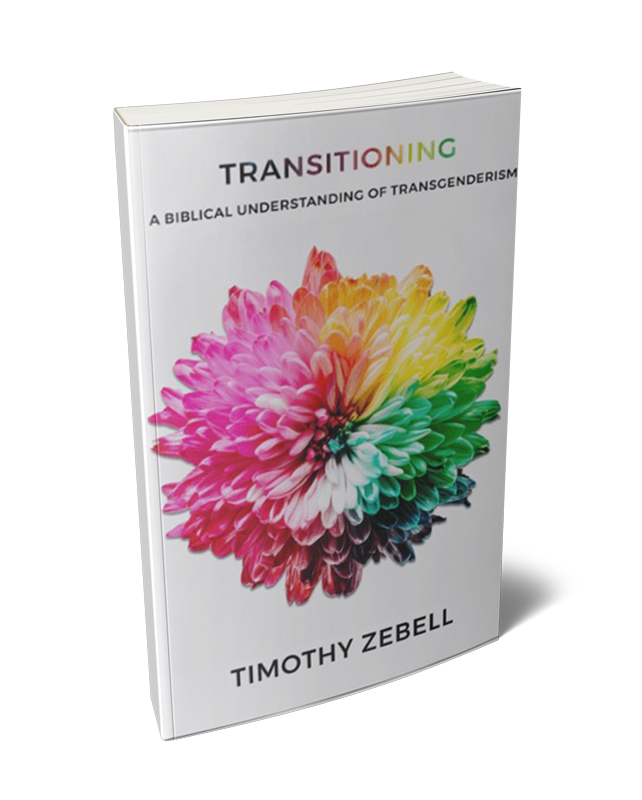In 2014 Facebook users were given the opportunity to select one of 50 gender options when creating their profile.[1] A few months later, Facebook worked with United Kingdom activist groups Press for Change and Gendered Intelligence to add 21 new gender options to this list.[2] With the removal of objective standards for determining gender, anyone is now capable of creating a new gender label based solely upon their personal feelings and preferences at the time. This is why, by January of 2016, individuals on the popular microblog Tumblr had self-identified 325 distinct genders.[3] However, this ever-expanding gender continuum only exists where there is a vacuum of objective standards for determining truth.
There is a growing body of scientific literature affirming both a gender binary and universal distinctions between these human males and females. Numerous scientific studies exist, such as: “Sociosexuality from Argentina to Zimbabwe: A 48-Nation Study of Sex, Culture, and Strategies of Human Mating;” “Gender Differences in Personalities across Cultures: Robust and Surprising Findings;” “A Cross-Cultural Analysis of the Behavior of Women and Men: Implications for the Origins of Sex Differences;” and “Universal Sex Differences in the Desire for Sexual Variety: Tests from 52 Nations, 6 Continents, and 13 Islands.” These studies consistently report that gender distinctions fall into two categories—male and female—and they are universal distinctions rather than social constructions. According to the abstract for the paper “The Persistence of Gender Stereotypes in the Face of Changing Sex Roles:”
Prevailing explanations for gender differences rest upon the sociocultural model, which treats personality as a consequence of socialization for social roles. Though sex roles and attitudes toward them have changed dramatically in the United States over the past three decades, a review of 18 longitudinal studies of gender stereotypes and self-ratings shows stability in perceptions of sex-typed personality traits. Our study of 3600 students surveyed in six waves from 1974 to 1991 also shows stability and even a slight increase in sex typing. This accumulating evidence is inconsistent with the sociocultural explanation. It is more consistent with the currently emerging sociobiological research that holds gender differences reflect innate differences between the sexes resulting from their different reproductive strategies. We conclude that valid social psychological explanations for gendered personality traits cannot rest upon sociocultural models alone but must include interaction of this unchanging genetic underlay with changeable social structures and processes.[4]
In their book Brain Sex: The Real Difference between Men and Women, Anne Moir and David Jessell write, “There has seldom been a greater divide between what intelligent, enlightened opinion presumes – that men and women have the same brain – and what science knows – that they do not.”[5] They also write, “It is time to cease the vain contention that men and women [from a biological sense] are created the same. They were not and no amount of idealism or Utopian fantasy can alter that fact. … The truth is that virtually every professional scientist … has concluded that the brains of men and women are different.”[6]
In keeping with this assessment, Simon Baron-Cohen concludes in his book The Essential Difference, “The female brain is predominantly hard-wired for empathy. The male brain is predominantly hard-wired for understanding and building systems.”[7] Nevertheless, the idea of a gender spectrum has been embraced by societies and countries around the world.
This is the natural byproduct of a culture that has embraced the post-modern rejection of universal truth, choosing to believe that we are nothing more than a cosmic accident. However, we as Christians stand apart from our culture in that we accept the Bible to be God’s unchanging standard for truth and the foundation for our purpose in life. And the Bible teaches that God created mankind as gendered beings consisting of male and female.
Be sure to read Timothy Zebell’s book Transitioning: A Biblical Understanding of Transgenderism.
Free Downloads
Share...
1. Sparks, Matthew. “Facebook Sex Changes: Which One of 50 Genders Are You?” Technology. Telegraph, February 14, 2014, 10:07 a.m., GMT. Accessed May 10, 2016. http://www.telegraph.co.uk/technology/facebook/10637968/Facebook-sex-changes-which-one-of-50-genders-are-you.html.
2. Williams, Rhiannon. “Facebook’s 71 Gender Options Come to UK Users.” Technology. Telegraph, June 27, 2014, 2:41 p.m., BST. Accessed May 10, 2016. http://www.telegraph.co.uk/technology/facebook/10930654/Facebooks-71-gender-options-come-to-UK-users.html.
3. STSAdmin. “Complete List of Tumblr Genders (SO FAR).” Tumblr, January 24, 2016. Accessed May 10, 2016. http://ageofshitlords.com/list-of-all-tumblr-genders-so-far.
4. Lueptow, Lloyd, Lori Garovich and Margaret Lueptow. “The Persistence of Gender Stereotypes in the Face of Changing Gender Roles: Evidence Contrary to the Sociocultural Model.” Ethology and Sociobiology 16, no. 6 (November 1995): 509–530.
5. Anne Moir and David Jessell, Brain Sex: The Real Difference between Men and Women (1991), 5, Source: Family Research Council. “The Scientific Objectivity and Universality of Gender Difference.” YouTube video, https://www.youtube.com/watch?v=JTzDM6XfqxE&feature=youtu.be (accessed May 30, 2016).
6. Anne Moir.
7. Simon Baron-Cohen, The Essential Difference (Basic Books, 2003), 1, Source: Family Research Council, “The Scientific Objectivity and Universality of Gender Difference.”
Unless otherwise noted, all Scripture quotations are taken from The Holy Bible, English Standard Version, copyright ©2001 by Crossway Bibles, a publishing ministry of Good News Publishers. Used by permission. All rights reserved.









